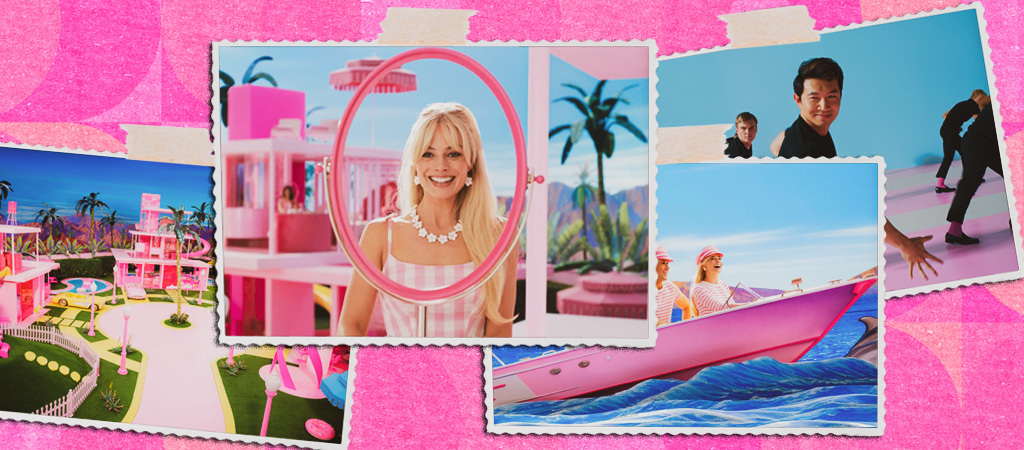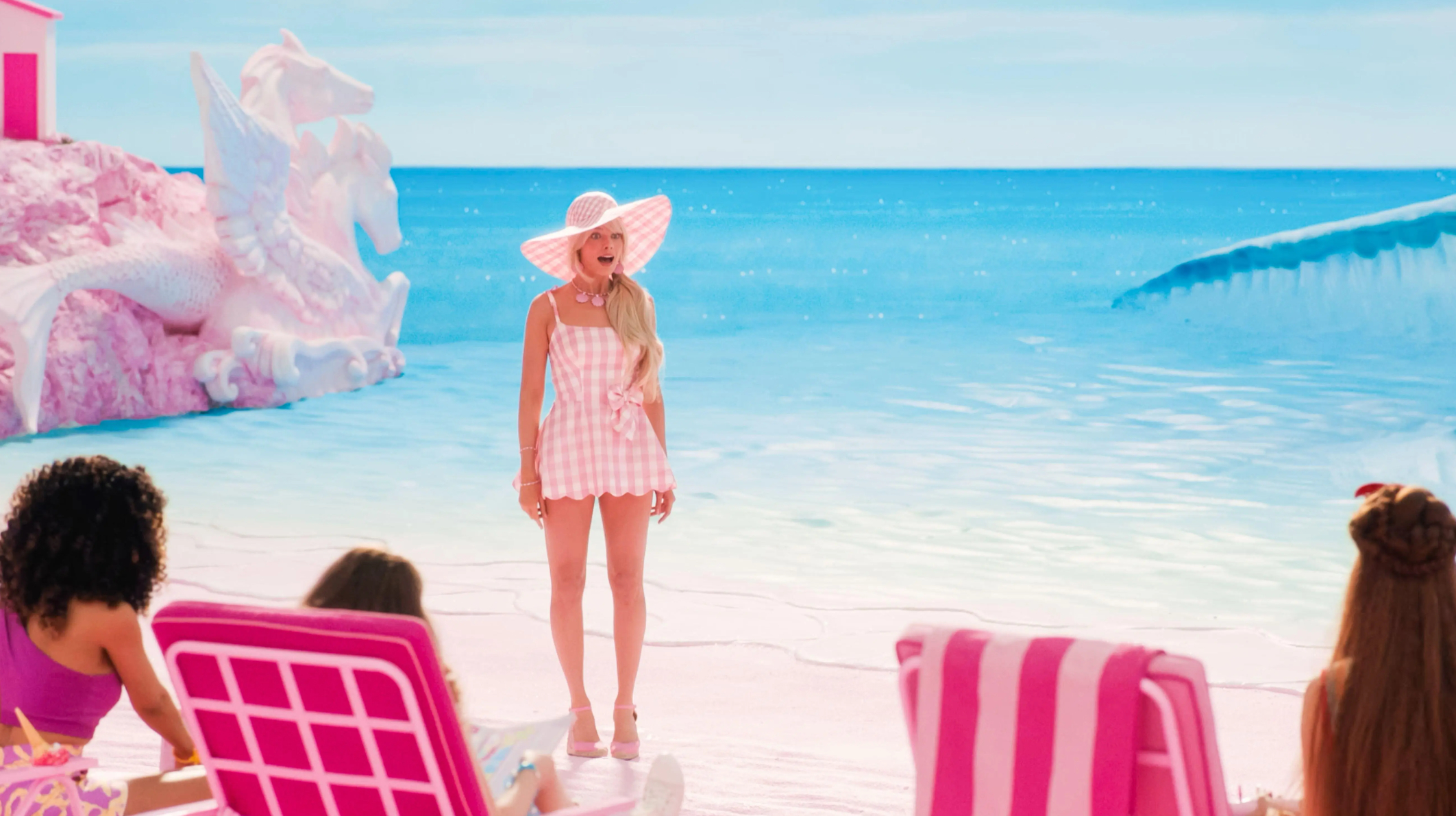
Greta Gerwig’s Barbie is a lot of things. It’s a colorful, slightly subversive comedy. It’s a fun introduction to Feminism 101. It’s a two-hour toy commercial. But more than all of these things, it’s an incredible display of top-notch production design. Though portions of the movie take place in “the real world,” it’s purely a fantasy with large swathes of time spent in a beautifully crafted Barbie Land. There are also big musical numbers with their own unique spaces and a surreal kitchen out of time where Barbie (Margot Robbie) meets the original creator of the doll, played by Rhea Perlman, along with the bizarre brutalist cubicles and hot pink heart-shaped head table of Mattel’s corporate offices. There is a great amount of love and attention paid to every detail, right down to the exact shades of pink in Barbie’s house.
In a behind-the-scenes tour of the Barbie Land set for Architectural Digest, Gerwig said that she and the creative team sat with “all of these different kinds of pinks” to try and find the right shades for Barbie Land. It was important that the pinks had the same gaudy quality as their toy counterparts. Gerwig said, “When I was a little girl, I liked the pinkest, brightest things,” and that sensibility permeates all of the colors in the fantastical elements of Barbie. Barbie Land rides the line between being gorgeous and garish, making it perfect for younger audiences without totally alienating adults. The kitchen in the past where Barbie meets her creator is suitably sepia-toned and faded, like an old photo, while the cubicles in the Mattel building are all varying shades of gray. That level of attention is extended to every aspect of the production design, from the incredible matte paintings that serve as backgrounds to the giant sticker on the inside of Barbie’s refrigerator. Barbie doesn’t eat, drink, or need to bathe, plus she ascends and descends from the different levels of her house as if a magical, invisible child’s hand is moving her, and her house reflects that.
The Barbie houses are pretty perfect re-creations of their pint-sized counterparts. They’re just slightly too small for their inhabitants, with showers that don’t actually have running water and a fireplace that’s just a flame-shaped light. In fact, according to an interview in Vogue, production designer Sarah Greenwood and set decorator Katie Spencer established a rule that there was no fire or water in Barbie Land. They also wanted to make everything look tactile, because toys are meant to be played with, which led to another rule about limiting computer-generated imagery (CGI) as much as possible. Spencer told Vogue: “To my mind, we were creating a toy. A toy is tactile, A toy is real. Everybody knows what’s CGI. Your sixth sense will tell you—even children will know. So with the painted backdrops, it just gave everybody the belief that you are in the toy box, you are in there, you are a toy.”

The relative lack of CGI also works well with the movie’s biggest influences: classic movie musicals. After all, Gene Kelly and Stanley Donen didn’t have computer-generated visual magic when they made Singin’ in the Rain and it’s a gorgeous Technicolor dream. Barbie draws on that same visual language, as Gerwig was inspired by its “dream within a dream” sequence, which viewers can see traces of in the “I’m Just Ken” musical number. Other influences include Stanley Kubrick’s 2001: A Space Odyssey, which Gerwig spoofs in the opening sequence, and Bob Fosse’s All That Jazz, which she credits as having an “artificial authenticity” that she strove for on Barbie.
The faux water of Barbie Land is one of the more fascinating fakeries of Barbie. Barbie’s pool was painted and then covered in resin to give it a watery look a bit more convincing than the basic shiny stickers of real-world Dream Houses, but it’s still just the right level of artificial. Likewise, the ocean where Ken (Ryan Gosling) does his job (which is “beach”) is blue and plastic, which makes surfing on it a rather tricky proposition. Background waves are giant colored cardboard pieces, harkening back to some of the earliest films and giving yet another layer of cinematic and toy-like fakery. Even the sand on the beach is pale pink because nothing in Barbie Land escapes the color, not even the palm trees, which have big chunks of pink in their bark.
All of this dedication to details big and small makes Barbie feel like something truly grand, elevating it beyond its witty script and great performances to make it feel more like a timeless classic than just another bubblegum blockbuster. There’s a good reason that Barbie has been nominated for an Academy Award for Best Production Design, and it stands a decent chance at winning. The 90s band Aqua might have told us “life in plastic, it’s fantastic,” but the production design team behind the Barbie movie finally helped us all understand exactly what they meant.
